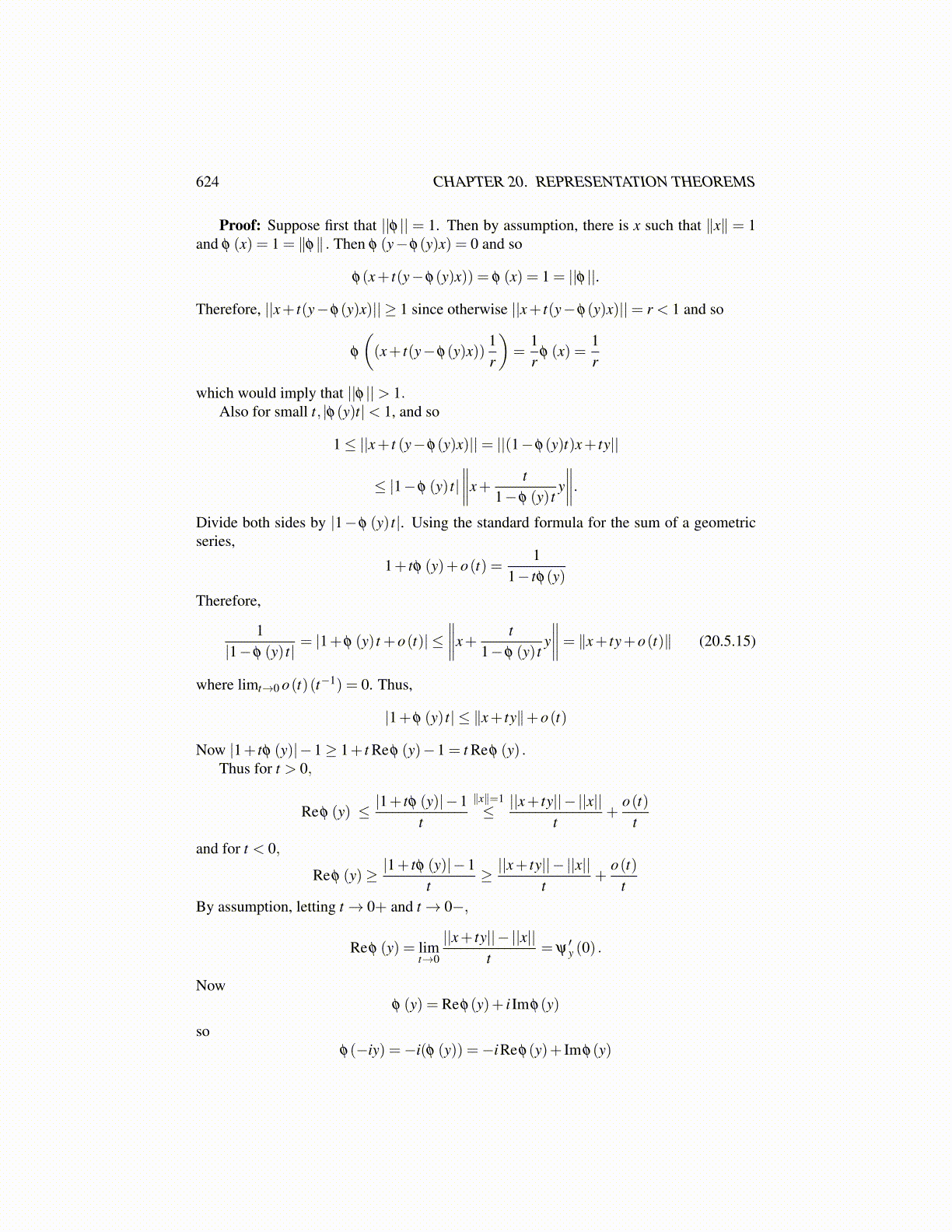
624 CHAPTER 20. REPRESENTATION THEOREMS
Proof: Suppose first that ||φ || = 1. Then by assumption, there is x such that ∥x∥ = 1and φ (x) = 1 = ∥φ∥ . Then φ (y−φ(y)x) = 0 and so
φ(x+ t(y−φ(y)x)) = φ (x) = 1 = ||φ ||.
Therefore, ||x+ t(y−φ(y)x)|| ≥ 1 since otherwise ||x+ t(y−φ(y)x)||= r < 1 and so
φ
((x+ t(y−φ(y)x))
1r
)=
1r
φ (x) =1r
which would imply that ||φ ||> 1.Also for small t, |φ(y)t|< 1, and so
1≤ ||x+ t (y−φ(y)x)||= ||(1−φ(y)t)x+ ty||
≤ |1−φ (y) t|∥∥∥∥x+
t1−φ (y) t
y∥∥∥∥.
Divide both sides by |1−φ (y) t|. Using the standard formula for the sum of a geometricseries,
1+ tφ (y)+o(t) =1
1− tφ(y)
Therefore,
1|1−φ (y) t|
= |1+φ (y) t +o(t)| ≤∥∥∥∥x+
t1−φ (y) t
y∥∥∥∥= ∥x+ ty+o(t)∥ (20.5.15)
where limt→0 o(t)(t−1) = 0. Thus,
|1+φ (y) t| ≤ ∥x+ ty∥+o(t)
Now |1+ tφ (y)|−1≥ 1+ t Reφ (y)−1 = t Reφ (y) .Thus for t > 0,
Reφ (y) ≤ |1+ tφ (y)|−1t
∥x∥=1≤ ||x+ ty||− ||x||
t+
o(t)t
and for t < 0,
Reφ (y)≥ |1+ tφ (y)|−1t
≥ ||x+ ty||− ||x||t
+o(t)
tBy assumption, letting t→ 0+ and t→ 0−,
Reφ (y) = limt→0
||x+ ty||− ||x||t
= ψ′y (0) .
Nowφ (y) = Reφ(y)+ i Imφ(y)
soφ(−iy) =−i(φ (y)) =−iReφ(y)+ Imφ(y)